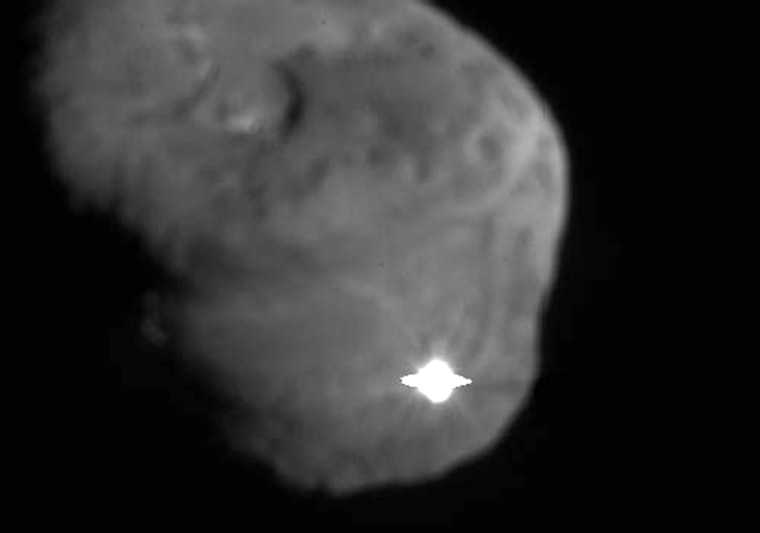NASA kept its comet-crunching Deep Impact spacecraft on course Wednesday for what could be an encore performance.
While the space agency's headquarters has not approved a specific future mission, it did give scientists at its Jet Propulsion Laboratory in Pasadena the go-ahead to bring the spacecraft closer to Earth's orbit for a potential mission extension.
"We're trying to maintain as many options as we can," said Andrew Dantzler, the director of NASA's solar system division.
The Jet Propulsion Laboratory reported that Deep Impact successfully fired its thrusters on Wednesday, making a slight change of course to enter an orbit that would bring the probe back to Earth by 2008. After the maneuver, the spacecraft was to switch to safe mode to conserve energy until it receives orders for a possible second mission.
If it were left untouched, the spacecraft would have drifted farther away from Earth.
At the climax of Deep Impact's primary mission, on the night of July 3-4, the mothership released an 820-pound (373-kilogram) copper impactor into the path of the onrushing Comet Tempel 1 and recorded the collision from a distance.
After sending back images and data from the crash and its aftermath, the mothership was supposed to be retired as space junk. But it remained surprisingly healthy, despite being bombarded with debris during its close flyby of Tempel 1.
Members of the Deep Impact team say Wednesday's maneuver will give them the option of steering the spacecraft toward 85P/Boethin, a comet that was discovered in 1975 and orbits the sun every 11 years. Since Deep Impact only carried one impactor, any future mission will not cause a cosmic smash-up. Instead, scientists hope the scientific instruments aboard Deep Impact will allow them a detailed glimpse of yet another comet.
What Deep Impact saw
This month's collision, taking place 83 million miles (133 million kilometers) from Earth, gave off two flashes of bright light and carved a crater in the potato-shaped comet. The collision released a larger-than-expected debris cloud extending thousands of miles into space — which kept scientists from peering into the comet's interior.
Scientists said the excavated pit could have ranged from the size of a house to the size of a stadium, and they believe the actual crater was on the larger end of the scale.
Comets are irregular bodies of ice and dust that orbit the sun and were born about 4.5 billion years ago — nearly the same time as the solar system itself. When a cloud of gas and dust condensed to form the sun and planets, comets formed from what was left over. Studying them could shed light on how the solar system formed.
Deep Impact blasted off in January from Florida for a circuitous 268-million-mile (429-million-kilometer) journey toward Tempel 1, which was discovered in 1867 and moves around the sun in an elliptical orbit between Mars and Jupiter every six or so years.
This report includes information from The Associated Press and MSNBC.com.
